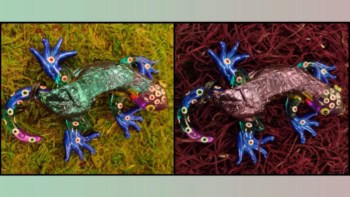Every wave field is characterized by two numbers: a local amplitude and a phase. If the amplitude is zero at a certain location, the phase of the field will be indeterminate at that point. Such phase singularities, or vortices, are encountered in many different systems, and the movements of the tides provide a beautiful example.
The average level of the sea is determined by tidal waves (which should not to be confused with the wind-driven waves that are superposed on them). Every 12 hours the water level oscillates between high tide and low tide, but the pattern of tidal waves is surprisingly complex. For instance, the high tide in the North Sea occurs at 3 p.m. at all points along the line of equal phase indicated by 0o, and at 4 p.m. at points along the 30o line, while the low tide occurs at 3 p.m. along the 180o line and so on.
But what about the points where the different lines intersect? Clearly the phase is undefined, or singular, at these points,which means that there are no high or low tides there.
Phase singularities like these are also common in optics, and there has been great interest in the properties of such optical vortices in recent years. Now Jonathan Leach and Miles Padgett of Glasgow University have studied the chromatic structure of an optical vortex for the first time, and confirmed predictions about their properties (New J. Phys. 5 154).
In the February issue of Physics World Taco Visser from the Department of Physics and Astronomy at the Free University in Amsterdam in the Netherlands describes these results in more detail.



